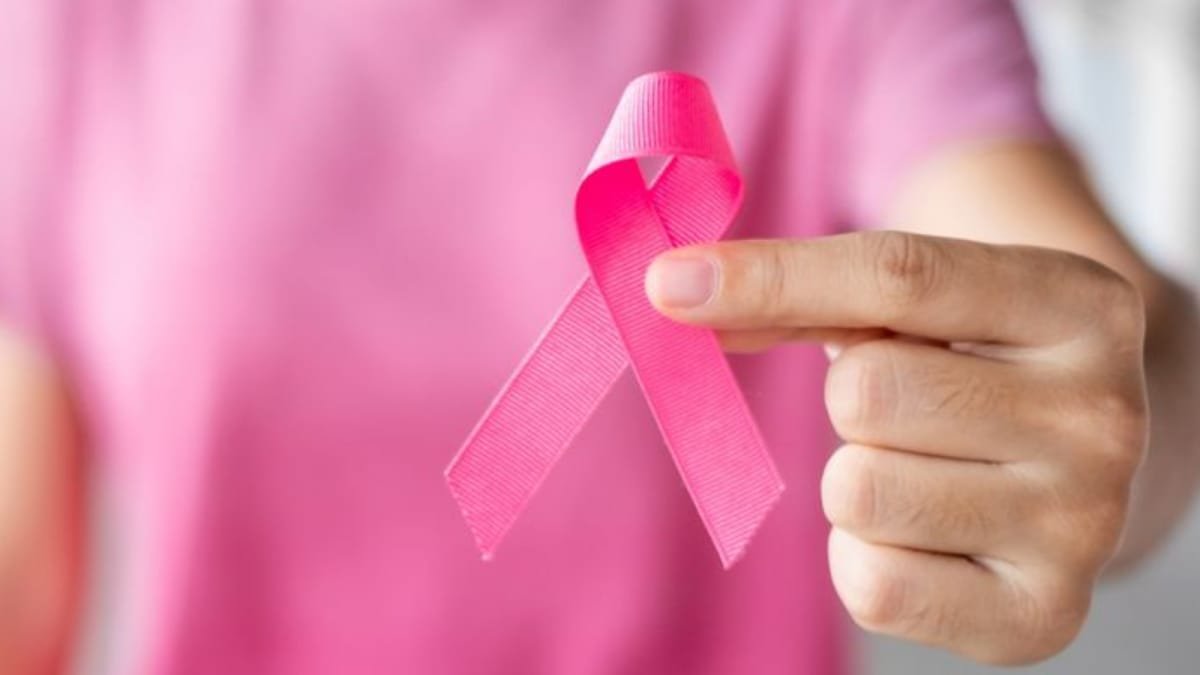Last Updated:June 29, 2025, 18:54 IST
By focusing on preventative measures, you can contribute to lowering the risk of cervical cancer for your spouse, fostering not only her health but the health of your relationship
While HPV infections are quite common and often resolve on their own, when they persist, they can lead to the development of cervical cancer over time.
In this article, we will explain three particular behaviours that may have unintended consequences on a woman’s health.
In the realm of marital relationships, the influence of certain intimate behaviours on health outcomes can often be overlooked. Cervical cancer is a type of cancer that occurs in the cells of the cervix—the lower part of the uterus that connects to the vagina. It is predominantly caused by persistent infection with certain high-risk types of the human papillomavirus (HPV), a common sexually transmitted infection. While HPV infections are quite common and often resolve on their own, when they persist, they can lead to the development of cervical cancer over time.
The Role of HPV in Cervical Cancer Risk
Human Papillomavirus, plays a significant role in the development of cervical cancer. HPV is a group of viruses, with over 100 different types identified. While many types of HPV are harmless, certain strains have the potential to cause cervical cancer. The virus is predominantly transmitted through intimate skin-to-skin contact, making it a prevalent sexually transmitted infection. It is crucial to understand that HPV can remain dormant, presenting no symptoms, yet still pose a risk to the health of a woman’s cervix over time.
The link between HPV and cervical cancer is well- Specific high-risk strains of documented. HPV, such as HPV-16 and HPV-18, have been directly associated with the majority of cervical cancer cases. When a persistent HPV infection occurs, it can lead to changes in the cervical cells, known as dysplasia. While the immune system often clears the virus naturally, a failure to do so increases the risk of these abnormal cell changes developing into cancer over several years.
How Intimacy and Habits Affect Cervical Health
Intimacy, while a cornerstone of marital relationships, can play a significant role in influencing cervical health. The presence of the human papillomavirus (HPV) is intricately linked to cervical cancer, and one of the primary modes of transmission for HPV is through intimate contact. It is crucial for couples to engage in open conversations about sexual health, including regular screenings and vaccinations, which are pivotal in prevention. Safe practices, such as using protection and maintaining monogamous relationships, can significantly reduce the transmission risk of HPV, thereby lowering the chances of cervical complications.
The following are the three husband behaviours that may contribute to cervical cancer in women:
Poor Personal Hygiene: When it comes to personal hygiene, attention to cleanliness is vital. A husband’s lack of proper hygiene can inadvertently affect his partner’s health. Germs and bacteria can reside on unwashed skin, potentially leading to infections during intimate moments. These infections can heighten a woman’s risk of developing cervical cancer over time. Encouraging consistent personal grooming and hygiene practices can help mitigate this risk. It’s a simple yet effective way to protect both partners’ health.
Infidelity and Multiple Sexual Partners: The presence of multiple sexual partners increases the risk of sexually transmitted infections (STIs). STIs, especially the human papillomavirus (HPV), are significant contributors to cervical cancer. A husband’s infidelity not only breaches trust but also poses a health threat by possibly introducing harmful viruses to his spouse. Open communication and mutual trust are essential components of a healthy relationship. Discussing safe sexual practices and undergoing regular medical check-ups can serve as preventative measures.
Smoking and Second-hand Smoke Exposure: Smoking isn’t just detrimental to one’s health; it can also adversely affect the partner. Research shows that women exposed to second-hand smoke are at a higher risk of developing cervical cancer. The harmful chemicals in tobacco can suppress the immune system, making it harder for the body to fight HPV infections. Encouraging a smoke-free environment is crucial. Quitting smoking or avoiding exposure to second-hand smoke can significantly reduce health risks for both partners, fostering a healthier living space.
How We Can Reduce Cervical Cancer Risk
Encourage Regular Health Screenings: One of the most effective ways to mitigate the risk of cervical cancer is by encouraging your partner to undergo regular health screenings. Pap smears and HPV tests are crucial for early detection of precancerous conditions and cervical cancer itself. These examinations can identify changes in cervical cells before they develop into cancer.
Practice Safe Intimacy: Adopting safe sexual practices is another vital step in reducing the risk of cervical cancer. The Human Papillomavirus (HPV) is a major cause of cervical cancer, and it is often transmitted through intimate contact. Using protection, such as condoms, can significantly decrease the likelihood of HPV transmission. Furthermore, limiting the number of sexual partners can also lower exposure to the virus.
Support a Healthy Lifestyle: Encouraging a lifestyle that includes a balanced diet and regular physical activity is beneficial for overall health and can contribute to reducing cancer risks. Diets rich in fruits and vegetables, particularly those containing antioxidants, can strengthen the immune system and help fight off infections, including HPV. Additionally, maintaining a healthy weight through exercise can reduce the risk of various cancers.
Advocate for Vaccination: The HPV vaccine is a powerful tool in preventing infections that could lead to cervical cancer. If your spouse is eligible, discussing the benefits of vaccination with her healthcare provider is advisable. This vaccine is most effective when administered before exposure to HPV, thus emphasizing the importance of early intervention.
By focusing on these preventative measures, you can significantly contribute to lowering the risk of cervical cancer for your spouse, fostering not only her health but the health of your relationship.
By prioritising open communication, practicing safe sexual behaviours, and encouraging regular health check-ups, you can significantly mitigate these risks.
As you reflect on the insights shared in this article, consider how adopting these proactive measures can not only safeguard your partner’s well-being but also strengthen the foundation of your relationship, ultimately promoting a harmonious and health-conscious marital journey.

Prof (Dr) Saransh Jain is the winner of the Swasth Bharat Rattan Award and is a Certified and Licensed Sexologist by the American Board of Sexology. He is currently a Senior Consultant at Dr SK Jain’s Burlingto…Read More
Prof (Dr) Saransh Jain is the winner of the Swasth Bharat Rattan Award and is a Certified and Licensed Sexologist by the American Board of Sexology. He is currently a Senior Consultant at Dr SK Jain’s Burlingto… Read More
- First Published:
#Lets #Talk #Sex #Preventative #Measures #Reducing #Cervical #Cancer #Risk #Lifestyle #News




